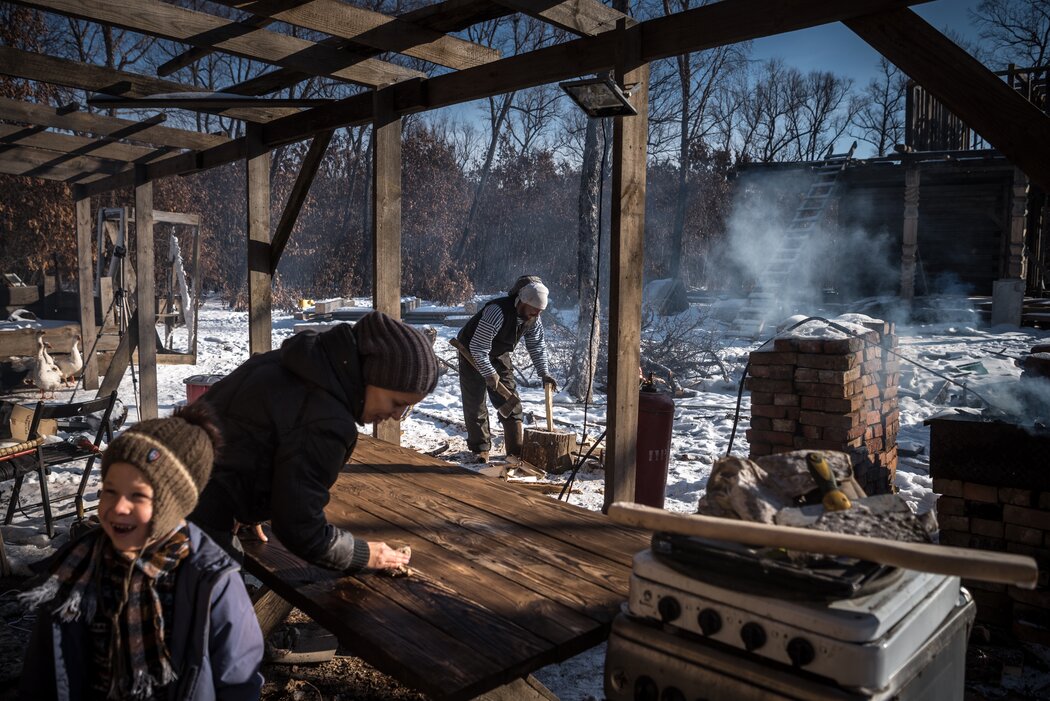Will Warmer Weather Revitalize Russia's Stalled Spring Offensive?

Table of Contents
The Impact of Rasputitsa on Military Operations
The "rasputitsa," a period of deep mud and challenging terrain, significantly hampered Russia's initial spring offensive. This period of extreme weather presented substantial obstacles, impacting both mobility and logistics.
Mobility Challenges
The muddy conditions severely restricted the movement of heavy military equipment.
- Limited Maneuverability: Tanks, armored personnel carriers, and other heavy vehicles became bogged down, limiting Russia's ability to conduct large-scale maneuvers and rapid advances. Their mobility was drastically reduced, hindering their ability to exploit breakthroughs or respond effectively to Ukrainian counterattacks.
- Supply Chain Disruptions: The transport of supplies, ammunition, and fuel to the front lines became incredibly difficult and dangerous. Many supply routes became impassable, leading to shortages for Russian forces. This logistical bottleneck directly impacted their operational effectiveness.
- Operational Impacts: Several planned offensives were delayed or significantly scaled back due to the impassable terrain. The mud season effectively neutralized Russia's advantage in heavy weaponry in many areas.
Impact on Troop Deployment and Logistics
The rasputitsa created logistical nightmares for the Russian army.
- Slowed Deployment: The difficult terrain slowed down the deployment of troops and equipment, hindering Russia's ability to concentrate forces for major attacks. Reinforcements were often delayed, leaving units vulnerable and under-supported.
- Medical Evacuations: The evacuation of wounded soldiers became significantly more challenging. Ambulances and medical supply vehicles faced the same mobility issues as other military equipment, leading to potential delays in critical medical care.
- Maintenance Challenges: The constant exposure to mud and water caused significant damage to military equipment, requiring extensive and time-consuming maintenance, further impacting operational readiness.
Warmer Weather and Improved Battlefield Conditions
The arrival of warmer weather and drier conditions is expected to dramatically alter the battlefield landscape, potentially giving Russia's spring offensive a much-needed boost.
Enhanced Mobility
Drier ground will significantly improve the mobility of tanks, armored personnel carriers, and other heavy equipment.
- Faster Advances: Russia will be able to move its forces and supplies more quickly and efficiently, allowing for a more rapid advance. This increased mobility could allow them to exploit weaknesses in Ukrainian defenses more effectively.
- Improved Logistics: Supply lines will be less vulnerable to disruption, ensuring a more consistent flow of ammunition, fuel, and other essential supplies to the front lines. This improved logistical capability will allow for sustained operations.
- Increased Operational Tempo: The overall operational tempo of the Russian military will increase, allowing them to launch more frequent and aggressive attacks. This can lead to a more dynamic and potentially decisive phase of the conflict.
Changes in Tactical Capabilities
Improved conditions might enable Russia to employ different and more effective tactical approaches.
- Combined Arms Operations: The increased mobility will facilitate more effective combined arms operations, integrating armor, infantry, and artillery more efficiently. This coordinated approach could prove to be a significant advantage.
- Flanking Maneuvers: The ability to move swiftly and freely will open up the possibility of launching flanking maneuvers and encirclements, potentially overwhelming Ukrainian defenses.
- Offensive Breakthroughs: Concentrated assaults enabled by improved mobility could achieve breakthroughs in Ukrainian lines, potentially leading to territorial gains.
Other Factors Influencing the Offensive
While warmer weather presents opportunities for Russia, other factors will significantly influence the success of their spring offensive.
Ukrainian Defenses
The strength and resilience of Ukrainian defenses remain a crucial variable.
- Western Military Aid: The continued supply of Western military aid, including advanced weaponry and training, significantly enhances Ukraine's defensive capabilities.
- Fortified Positions: Ukraine has had time to establish well-fortified defensive positions, making it challenging for any attacking force to gain ground.
- Counter-Offensive Strategies: Ukraine's effective counter-offensive strategies continue to disrupt and inflict losses upon advancing Russian troops.
Resource Availability
Russia's remaining military resources and their ability to replenish depleted supplies are critical factors.
- Sanctions Impact: International sanctions continue to impact Russia's ability to acquire advanced weaponry and critical components for their military equipment.
- Ammunition Stockpiles: The intensity of the fighting has depleted Russia's ammunition stockpiles, potentially limiting the sustainability of any major offensive.
- Manpower Issues: Russia faces potential manpower shortages, impacting their ability to sustain prolonged combat operations.
Potential Scenarios and Predictions
The impact of warmer weather on the conflict remains uncertain, with several possible scenarios emerging.
Optimistic Scenario for Russia
In an optimistic scenario for Russia, improved battlefield conditions lead to significant territorial gains. This could involve successful breakthroughs in Ukrainian lines and the capture of key strategic objectives. Such a scenario could significantly alter the geopolitical landscape and potentially lead to renewed negotiations from a position of strength for Russia.
Pessimistic Scenario for Russia
Conversely, a pessimistic scenario sees Ukrainian defenses holding firm, negating any significant advantage gained by improved conditions. This could lead to continued stalemate and heavy losses for Russia, potentially exhausting their remaining resources and weakening their position in the conflict.
Neutral Scenario
A more neutral scenario suggests that warmer weather will have a limited impact, resulting in only minor territorial shifts. This scenario points to a continued war of attrition, with neither side achieving decisive gains. This prolonged conflict could lead to further exhaustion and losses for both sides.
Conclusion
The question of whether warmer weather will revitalize Russia's stalled spring offensive is complex and multifaceted. While improved battlefield conditions offer Russia the potential for enhanced mobility and tactical flexibility, the strength of Ukrainian defenses, the availability of resources, and the effectiveness of counter-offensive strategies remain crucial variables. Continued analysis of battlefield developments and the evolving military situation is crucial for understanding the trajectory of this ongoing conflict. Stay informed on the impact of changing weather conditions on Russia’s spring offensive and the wider implications for the war in Ukraine.

Featured Posts
-
 Analyzing Nclh Stock Insights From Hedge Fund Investments
Apr 30, 2025
Analyzing Nclh Stock Insights From Hedge Fund Investments
Apr 30, 2025 -
 Becciu Dovra Risarcire I Suoi Accusatori La Sentenza Definitiva
Apr 30, 2025
Becciu Dovra Risarcire I Suoi Accusatori La Sentenza Definitiva
Apr 30, 2025 -
 Learn About Channing Tatums New Girlfriend From Australia
Apr 30, 2025
Learn About Channing Tatums New Girlfriend From Australia
Apr 30, 2025 -
 Conmocion En Argentina Muere Joven Figura Del Futbol Afa
Apr 30, 2025
Conmocion En Argentina Muere Joven Figura Del Futbol Afa
Apr 30, 2025 -
 Ru Pauls Drag Race Live Milestone 1000th Show Global Livestream
Apr 30, 2025
Ru Pauls Drag Race Live Milestone 1000th Show Global Livestream
Apr 30, 2025
